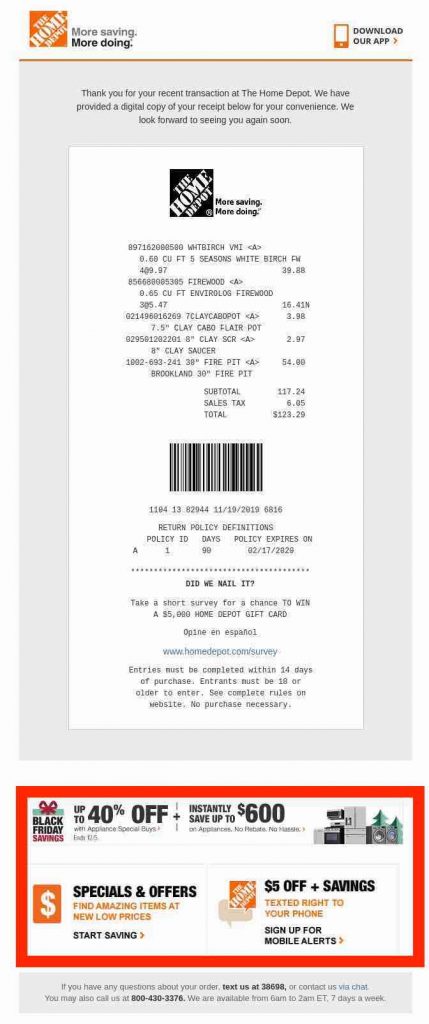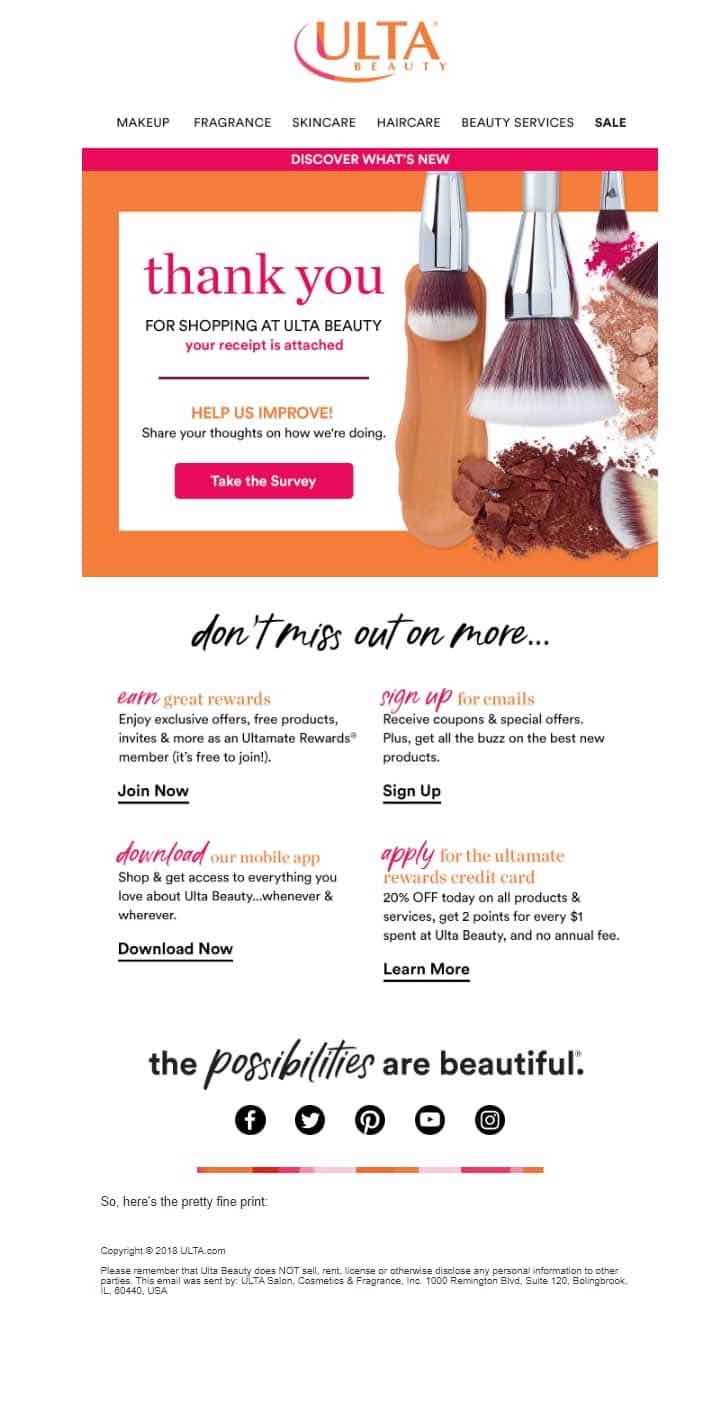Transactional emails are automated messages based on a visitor’s interaction with a website. There are multiple types, including:
- Order confirmations,
- Shipment notifications,
- Product review requests,
- Welcome emails to new subscribers or customers,
- Product in-stock or price-drop notices,
- Abandon cart (and browse) reminders,
- Password or account resets,
- Receipts.
Use every transactional opportunity. Most all visitor interactions are suitable for emails. For example, many brick-and-mortar retailers now offer electronic receipts at a physical checkout. The practice benefits consumers by reducing paper and merchants by collecting shoppers’ addresses for cross-selling.
Get creative. Transactional emails do not have to be boring. Colors, photos, design — all increase engagement.
This transactional email from Ulta, the beauty brand, is visually appealing and provides essential purchase info while encouraging additional sales and engagement.
Use Email on Acid, Litmus, or a similar tool to ensure the email renders correctly on smartphones and is otherwise accessible for visually-impaired recipients.
5 Ways to Improve
Highly deliverable. Transactional emails deploy individually versus from a list, increasing the likelihood of reaching the recipient’s inbox instead of a spam or junk folder.
- Insert a prominent link to the site to encourage recipients to shop.
- Include all info from the transaction — order number, products, tracking.
- Offer time-sensitive discounts on future purchases.
- Cross-sell related items.
- Link directly to the login or account page.
Use consistent branding. Transactional emails should mimic the overall appearance of your site and brand while clarifying the message’s purpose.
Address the basics.
These emails are powerful engagement tools, much greater than traditional marketing solicitations.
Home Depot displays product offers at the bottom of the electronic receipts.


Use personalization. Segmentation and personalization have long been a cornerstone of transitional and marketing emails, increasing open and click rates by upwards of 25%. Include in transactional messages personalized product recommendations, complementary cross-sell suggestions, warranty offers, rating-review requests, and more.
Higher open and click rates. The content of transactional emails is typically informational, not promotional, leading to elevated open and click rates. Listrak’s “2021 Ecommerce Email Benchmarks” report found that transactional emails had the highest open rates at almost 61%, while general marketing emails hovered at roughly 13%.
Typically this includes a consistent “From:” name, but not always. For example, Amazon’s order confirmations are from “auto-confirm@amazon.com” while its promotions come from “store-news@amazon.com.”

Also, coordinate SMS notifications with emails as the former typically supplement the latter, depending on the customer’s preference.

Longer shelf life. Consumers often keep transactional emails in their inboxes for an extended period, resulting in much brand exposure.





